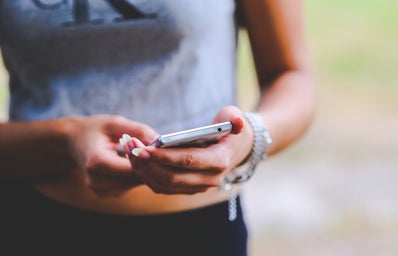Have you ever heard of Emma Hallberg, a Swedish influencer? Or Racheal Dolezal? These are the names of two of many women who have been accused of blackfising. Blackfising is when women of European descent use artificial tanning, filters and makeup to make themselves look darker, to appear Black, Arab, Hispanic or mixed race. Many women have been called out for making themselves look darker than they actually are. Celebrities such Kim Kardashian-West, Ariana Grande and Selena Gomez have also been accused of blackfising.
The first thing you will see when you google Emma Hallberg are pictures of her in different skin colours. In most pictures she’s posted on Instagram she does not look white, and most of her followers did not know that she was white until a picture of her without makeup started trending. When asked if she was pretending to be black, she denied these claims. There are other influencers whose pictures you will see as you scroll through Emma’s, who have also been accused of blackfishing and, like Emma, they also claim that they are not pretending to be women of colour (WOC). If you google Rachel Dolezal and go to images, you will see pictures of her in box braids, and curly hair. Racheal is a Caucasian woman and has no verifiable African ancestry, however she identifies as a black woman.
The question you might be asking yourself right now is “what is wrong with white women wanting to look like or be WOC?” Well firstly, most of us know that influencers make money from promoting brands and products. Influencers such as Emma, who have gained many followers by posing as a WOC, might be the ones who are given the opportunity to promote certain products aimed at black women. This takes away the opportunity from existing black influencers, and it allows the likes of Emma Hallberg to capitalise on posing as a WOC.
In the case of Rachel Dolezal, she received a bursary to study at Howard University, her parents claim that she only got the bursary because she said she is black. She said that her father is a black man. Because of racial segregation, there are stillmany black students in the USA whose parents cannot afford to pay their tertiary fees. The bursary Rachel got was meant to help a black student whose parents could not afford to pay their fees. She also received jobs that were intended for black people. She benefited from lying about her race.
Another reason why black people are unhappy with blackfishing is that people like Rachel and Emma can wake up one day and decide they do not want to look black anymore, then go back to being white. They also don’t face the struggles that Black people have to face everyday. Although Rachel has been advocating for anti-racism as a black woman, many believe that she should just be a white ally and fight racism without posing as a black woman.
Some people are even comparing blackfishing to blackface. Blackface is theatrical makeup, predominantly used by white performers to represent caricatures of black people. Blackface has contributed to the spread of racial stereotypes about African Americans, because performers have portrayed characters that perpetuated stereotypes about African Americans, including being lazy, ignorant, hypersexual, superstitious, criminal or cowardly. Blackfishing and blackface are not the same, however, they are both problematic.
Another trend that black people are not happy about is digital blackface. Digital blackface is a term that refers to white people using GIFs, emojis, memes and other images of black people as representation of themselves, to express different reactions on social media.
The most popular GIFs on social media are those of black people. White and non-black people seem to prefer GIFs with black people when they want to express excessive or exaggerated emotions. This seems harmless; however, it is more similar to blackface than one would think. As explained above, blackface is when a non-Black person uses makeup to make themselves appear black. Minstrel shows portrayed black people negatively, they ridiculed them and exaggerated their features and expressions. Black people are often associated with excessive behaviour, and minstrel shows are one of the things that are to be blamed for that. GIFs with black people are often used to show exaggerated emotion, this is not different from what minstrel shows did. Both minstrel shows and GIFs that non-black people normally share on social media never depict black people as anything that could be deemed ‘serious’.
The only difference between digital blackface and blackface is that one does not need to paint their face black when it comes to digital blackface. Digital blackface is the 21st century version of blackface. If you’re not a black person and always find yourself using GIFs with Black people, and black emojis, ask yourself why?


